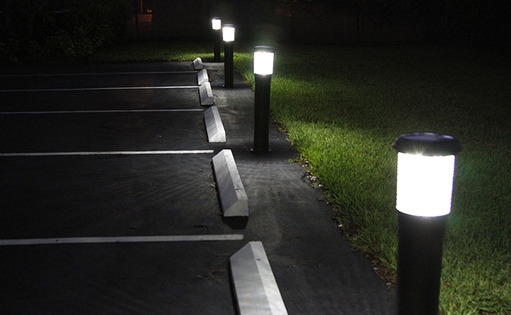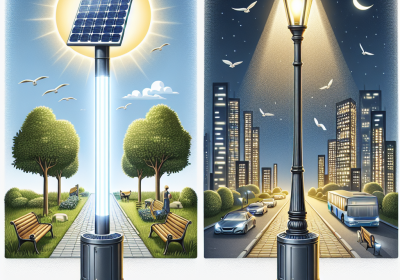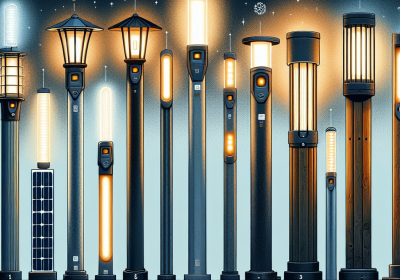Regulatory Insights: Compliance and Standards for Installing Solar Bollards in Australia
In the quest for greener cities and sustainable development, the adoption of solar-powered infrastructure is accelerating across Australia. Solar bollards, a vital component of this green revolution, are gaining prominence both in urban landscapes and remote settings. But what are the regulatory hoops that businesses and municipalities must jump through to install these devices? This article illuminates the pathway towards compliance with the necessary standards and regulations.
Understanding Solar Bollards
Definition and Functions
Solar bollards are robust, standalone posts that harness sunlight to provide illumination. They are equipped with solar panels, batteries, and LED lights. Why are they becoming so popular? Simply put, they offer a self-sufficient lighting solution that reduces both energy consumption and operational costs.
Advantages over Traditional Lighting
Imagine a lighting system that cuts down your electricity bills and reduces carbon emissions simultaneously. Solar bollards do just that, unlike their traditional counterparts that rely on grid power. Moreover, their installation is less invasive, requiring no trenching for cables or extensive wiring.
Common Applications in Australia

From lighting up serene walking trails in Tasmania to ensuring visibility in bustling parking lots in Sydney, solar bollards are versatile. They enhance safety, aesthetics, and accessibility in public spaces, proving their worth across varied locations.
Regulatory Framework
Federal Regulations
At the federal level, solar bollard installations touch on energy efficiency regulations and safety standards. Australia’s commitment to renewable energy targets also indirectly supports the deployment of such sustainable technologies.
State-Specific Regulations
Each state in Australia might have nuanced requirements affecting the installation. For instance, Victoria could emphasize bushfire safety, whereas Queensland might focus more on cyclone resilience.
Role of Local Governments
Local councils often have the final say, managing the specifics of urban planning and infrastructure enhancements. They ensure that installations do not interfere with public utilities or breach community standards.
Compliance and Standards
Relevant Australian Standards
Solar bollards in Australia must comply with AS/NZS 1158, which covers the performance and design requirements for road lighting and public spaces. Adherence ensures that the lighting is effective and safe for public use.
Electrical Safety and Environmental Impact
Electrical standards ensure that the solar bollards are safe and reliable. Environmental standards, meanwhile, make sure installations do not harm local ecosystems, adhering to conservation principles.
Accessibility Considerations
Under the Disability Discrimination Act, public installations, including solar bollards, must not pose accessibility barriers for people with disabilities. This means considering the placement and operation of bollards to accommodate everyone.
Installation Guidelines
Site Assessment and Planning
Before even breaking ground, a thorough site assessment is crucial. This includes understanding the sun’s path, shading from trees or buildings, and ground conditions. Each factor plays a vital role in the solar bollard’s performance.
Technical Requirements
Technical specifications such as spacing, height, and illumination levels must meet both the AS/NZS 1158 standards and local requirements. These ensure that the bollards perform effectively and consistently.
Environmental Considerations
Installation should avoid disrupting local wildlife or contributing to light pollution. Strategic placement and careful planning can mitigate these impacts, promoting an environmentally friendly setup.
Certification and Approval Processes
Local Council Approvals
Obtaining approval from local councils involves demonstrating compliance with all relevant standards and regulations. This process might include site plans, environmental impact assessments, and safety audits.
Certifications for Components
Each component of the solar bollard, from solar panels to batteries, must be certified for quality and safety. This ensures longevity and reliability in harsh Australian conditions.
Inspection and Testing
Before a solar bollard system goes live, it undergoes rigorous inspections and testing. These procedures verify that the installation meets all operational and safety criteria.
Challenges and Solutions

Installation challenges can range from technical issues, like inadequate sunlight due to unexpected shading, to bureaucratic delays in approval processes. However, learning from past installations can streamline future deployments. Consider the case of a coastal town that successfully integrated solar bollards along its beachfront by collaborating closely with local environmental groups and engineers to address concerns about sea spray corrosion and turtle nesting areas.
As solar bollard technology continues to evolve, so too will the regulatory landscape. Staying informed about these changes is crucial for maintaining compliance and leveraging these sustainable technologies effectively. Encouraging adherence to standards not only promotes safety but also sustainability, paving the way for a brighter, greener future.
Further Resources
For those keen to dive deeper, numerous resources are available. Regulatory bodies like the Australian Lighting Council and websites such as the Clean Energy Council of Australia provide extensive information. Local government websites also offer guidelines and contact information for consultations on specific local requirements.
FAQs
Q: Are solar bollards cost-effective compared to traditional lighting? A: Yes, solar bollards can be more cost-effective in the long run due to lower operational and maintenance costs.
Q: What are the main regulatory bodies overseeing solar bollard installations in Australia? A: Key bodies include the Australian Lighting Council, local councils, and state-based departments of infrastructure and planning.
Q: How long do solar bollards last? A: With proper maintenance, solar bollards can last over 10 years, although battery replacements may be needed every 5 to 7 years.
References:
https://orcasolarlighting.com.au/solar-bollard-lighting
Read more about commercial solar street lights
Illuminating the Path: The Rise of Commercial Solar Bollards in Australian Landscapes
Eco-Friendly and Efficient: How Solar Bollards Are Shaping Australia’s Green Cities
Cost Analysis: The Long-Term Savings of Solar Bollards Over Traditional Lighting Solutions
Innovation in Illumination: The Latest Technologies in Solar Bollard Design
The Role of Solar Bollards in Australia’s Varied Climates
Public Perception and Acceptance: Community Responses to Solar Bollards in Urban Areas
The Future of Outdoor Lighting: Predictions for Solar Bollards in the Next Decade









